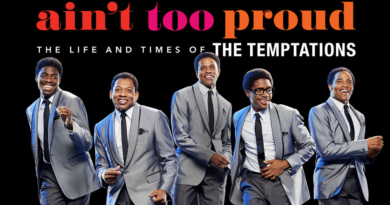Dionne Warwick The Legend Continues
By Ron Scott
I had the pleasure of a phone interview with legendary Dionne Warwick in February. Even over the phone I was somewhat nervous talking to this remarkable song stylist, whose voice is so distinctive that within two notes you know—it’s the East Orange, New Jersey legend Dionne Warwick.
I first saw Warwick at the Apollo Theater when I was about 15 years old. I was in awe; that woman’s voice touched my soul with a force that shook my heart. WOW, what a feeling! Seeing and hearing her on that Apollo stage was almost like a dream. She looked so elegant on her album covers, wearing exquisitely fitted gowns. The local girls both liked her voice and wanted to mimic Warwick’s style from her hair to her pencil skirts with stockings and nice heels. That was Warwick’s power as a role model in the black community. She walked on stage with such grace, like a floating black angel offering solace is her songs. Her classic style was a signature statement (that also represented black pride and hipness) to its staying power. Some of her iconic gowns are displayed at the Smithsonian’s National Museum of African American History and Culture, and in recognition of her sophisticated style, she was awarded a Golden Camera for Lifetime Achievement and a Glamour Woman of The Year Award.
Here we are, 58 years later and generations of listeners are still loving and playing her music. Young fans are playing her music with that same inspired enthusiasm that captured so many hearts years ago. “I am honored that the music I sing apparently appeals to everyone,” said Warwick. “I am one of the fortunate few.”
Aside from her distinctive voice, the five-time Grammy award winner had another great asset, dynamic songwriters Burt Bacharach and Hal David headquartered in New York City’s legendary Brill Building, home to music publishers and dozens of songwriters. Warwick noted, “They asked me to do demonstration records for them.” She was already doing background vocals for other groups in the building when Bacharach was taken by her sound and felt she was perfect to record their compositions to pitch to record labels.
“Don’t Make Me Over” in 1962 kicked off 18 consecutive Top 100 singles for Warwick. A few of her chart-toppers include, “Walk on By,” “Message to Michael,” “ Promises Promises,” “ Alfie,” “ Say a Little Prayer,” and “I’ll Never Fall in Love Again.” After 30 hits and close to 20 bestselling albums with the team, “Do You Know the Way to San Jose?” won Warwick her first Grammy Award in 1968. “It was surprising that I won a Grammy for this song,” said Warwick. “I never thought it would go over big with listeners.”
The winning concept that made her one of the most popular singers in R&B and pop history was accompaniment by a full orchestra that featured a lush string-section, and bold brass horns. No other singer in R&B or pop had such orchestration at that time. In a series of trailblazing moments, she became the first African-American female artist to appear before the Queen of England at a Royal Command Performance. Her second Grammy followed in 1970 for her album, “I’ll Never Fall in Love Again,” and Warwick became the first African-American solo female artist of her generation to win the prestigious award for Best Contemporary Female Vocalist.
“I don’t categorize music,” Warwick explained. “Music is music to me… My family influenced me the most. I grew up around gospel music.” She began singing gospel as a child at New Hope Baptist Church in Newark, New Jersey. Her father, Mancel Warrick, was a record producer; her mother, Lee Drinkard, managed RCA recording artists The Drinkard Singers, a family gospel group. These varied influences allowed her to reach into multiple genres from her early days in gospel to pop, jazz, and American classic standards.
A sensitve interpreter, her songs are colorful collages that become beautiful masterpieces. Very few singers have that ability, as one can hear on her recording of the well-traveled song “The Look of Love.” Her sultry version is a memorable resonance, some might say it’s the definitive version. As for her ability to turn every song into a Dionne masterpiece, she says, “It’s a gift and blessing, and the great songwriting of Burt and Hal.”
Since the early 1960s she has more than 60 charted hit songs, selling over 100 million records. “It’s a blessing that people have been able to enjoy my music and today they still feel a strong connection,” said Warwick. A humanitarian, she feels connected to people around the world and has advocated for global well-being through such efforts as AIDS awareness, The Starlight Foundation, children’s hospitals, and music education. She served as U.S. Ambassador of Health, appointed in 1987 by President Ronald Reagan; and in 2002 acted as a United Nations Global Ambassador for the Food and Agriculture Organization. Using her music to support her activism, Warwick sang on the all-star charity single, “We Are the World” and at 1984’s Live Aid. She also made recording history with Gladys Knight, Elton John, and Stevie Wonder with, “That’s What Friends Are For,” the first recording dedicated to raising awareness and funds for AIDS research. Warwick noted, “helping others is always a most essential part of life.”
Throughout her career, Warwick has been a staple on television whether hosting Solid Gold or singing familiar TV themes from Lifestyles of the Rich and Famous and The Love Boat. In addition to her Grammy awards, she’s been honored with NAACP Image Awards, a star on the Hollywood Walk of Fame, the prestigious Marian Anderson Award, and induction into the APOLLO Walk of Fame.
In 2019 she released She’s Back, a soulful collection of new music featuring duets with Musiq Soulchild, Tyrese, Kenny Lattimore, and others. Warwick’s smooth and soothing tones are familiar and welcoming at a time when what the world truly needs is love, sweet love — and there’s
even an update of her treasured classic on this release.


